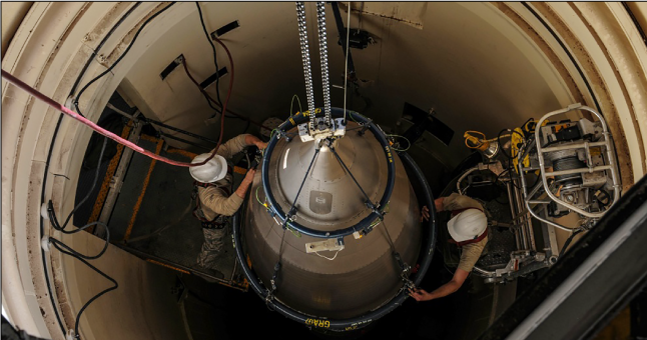
National Nuclear Security Administration (NNSA) plans to replace the W78 nuclear warhead with the W87-1 in 2030 are hamstrung by a lack of formal plans to assess cost, schedule, benefits, or risk, with as much as $14.8 billion on the line, according to the Government Accountability Office (GAO).
At current estimates, the price tag would place the new warhead as the most expensive program of its type to date, and officials aren’t even certain if NNSA can produce enough of the W87-1’s fissile cores in time to meet its planned production schedule. It failed to consider cost estimates in early major design decisions — nor was it required to do so. While the NNSA now says that cost must be considered, the remaining design decisions that would reach either minimum or enhanced requirements could affect cost.
Despite this, the NNSA has no study plans to assess the cost and benefits of these remaining decisions, even though NNSA best practices recommend such things. As such, the NNSA has little assurance design studies will apply consistent, reliable, and objective approaches. Further complicating matters is that NNSA and independent studies alike have determined it doubtful the NNSA will finish two planned fissile core production facilities on schedule. If a single facility can’t produce in the early 2030s, the NNSA will likely produce fewer weapons than planned.
“We were unable to fully assess the extent to which the two pit production facilities will be ready to produce pits for the W87-1 because NNSA’s plutonium program—which is managing the facility readiness efforts—has not yet completed an integrated schedule for the overall pit production effort,” GAO said. “An integrated schedule is important, according to best practices, because it integrates the planned work, resources, and budget.”
The NNSA W87-1 program was restarted in 2019, and it’s estimated the weapon could cost between $8.6 billion to $14.8 billion. NNSA intends to manufacture the entire warhead from scratch, using facilities it is modernizing or repurposing.
Going forward, GAO made four recommendations for the NNSA to turn things around. These included following best practices, ensuring consistent, reliable, and objective assessments of remaining feature and component designs, directing the Office of Defense Programs plutonium program office build an integrated schedule consistent with those best practices, and that the W87-1 program prioritize development and documentation of a risk mitigation strategy, considering that production might be insufficient to meet needs.




